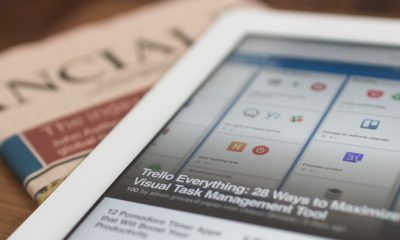Workplace communication often took a back seat this past year, as employees and employers rushed to work remotely, struggled with technology barriers and adjusted to physical distancing. But the pandemic has resulted in valuable lessons for communicating on the job, according to a Baylor University study.
During the onset of COVID-19 — along with accompanying layoffs and a recession — “there likely has never been a moment with such demand for ethical listening to employees,” said lead author Marlene S. Neill, Ph.D., associate professor of journalism, public relations and new media at Baylor.
“Ethical listening” was defined by one communication manager as “listening with an open mind and being able to hear the good, the bad and the ugly. Strategic listening is then taking the good and the bad and the ugly and knowing how to use the information.”
For the study, published in the Journal of Communication Management, researchers interviewed 30 communication professionals in the District of Columbia and 13 states in the USA: Arkansas, California, Delaware, Massachusetts, New Hampshire, New York, North Dakota, Ohio, Oklahoma, Pennsylvania, Texas, Virginia and Washington. Interviewees represented technology, financial and legal services, food and beverage, hospitality, energy, health care, trade associations, transportation, higher education and consultants.
The professionals interviewed stressed the importance of protecting confidentiality so employees feel comfortable giving feedback and do not fear retribution.
When COVID-19 hit and workers often no longer shared physical quarters, the use of Zoom soared, whether for large group meetings or one-on-one sessions, researchers noted. And while senior managers valued communication, it became less of a priority as companies made such quick changes as mandated quarantines.
For communications professionals, remote work made it harder for them to build trusting new relationships. They, like others, felt isolated, missing critical conversations and small talk.
“We heard that the pandemic posed challenges in internal communication due to the alienation many employees experienced, and it prompted us to reevaluate the moral responsibility communications holds for keeping employees feeling connected to their teams,” said co-researcher Shannon A. Bowen, Ph.D., professor of journalism and mass communications at the University of South Carolina.
The study shed light on companies’ challenges, how they strove to meet them and how they might use those strategies in the future.
For example, a communication manager for a trade association of the hospitality industry said that its members also are primary stakeholders in their companies.
“There were stakeholders who were saying, ‘I’m going to have to close my doors. Please do something.’ And there’s only so much we can do. It called for a different type of empathetic listening. This is these people’s livelihood. In hospitality, that’s like any business owner, that’s their baby. But it’s not just their baby. It’s a baby that generates income for the employees they deeply care about. It’s not just that it impacts them; it impacts their employees, which is a double cut to the heart.”
Meanwhile, a communication manager in health care encouraged senior leaders to schedule 30-minute “walk-around” sessions — whether masked and in person or via technology.
“Trust has to be built with actions and follow-through, not just words,” Bowen said.
For all the organizations studied, “the desire and follow-through to ethically listen to employees appeared to be a challenge,” Neill said.
Most participants said the ratio of management messaging to employees compared to feedback was lopsided, with far more talking than listening.
“We cannot promise we are going to fix everything,” said a communication manager in the financial services industry. “But we have the mantra if you are asking for feedback, it is critical that you close the loop and say that.”
Communications managers often have limited staff to analyze feedback. They also contend with a lack of communication between departments, especially in larger organizations.
To solve those problems, some communications professionals suggested having a team member to sit in on department meetings and serve as a liaison. One professional in a law firm said she makes it a point to invite the less vocal members to share their thoughts, while another uses on-on-one meetings for them.
“They open up a lot more when it’s just one on one,” she said. “In groups, large groups, they do not speak as freely, because there’s a hierarchy. If the older, more senior people are not saying anything, then the younger less seasoned attorneys more than likely will not say anything.”
Some internal communicators also said that during the pandemic, they saw a need for shorter, more focused meetings, in part to cut down on stress. And one consultant said that more visual communications, such as videos and video conferencing, seemed to help employees feel that they are cared for.
“I’m making sure that I have my eyes trained on the screen on the facial expressions,” said a communication manager for a trade association. “Part of active listening is also looking for visual cues of the reactions of your colleagues.”
Neill said the researchers were encouraged by the heightened level of empathy for the impact of organizational decisions on employees’ lives.
“We recommend that senior leadership and communication professionals seek ways to continue to improve moral sensitivity well after the global pandemic has receded, which can lead to more ethical decision-making,” she said.


 BizNews3 weeks ago
BizNews3 weeks ago
 BizNews3 weeks ago
BizNews3 weeks ago
 BizNews3 weeks ago
BizNews3 weeks ago
 BizNews3 weeks ago
BizNews3 weeks ago
 BizNews3 weeks ago
BizNews3 weeks ago
 BizNews3 weeks ago
BizNews3 weeks ago
 Tech & Innovation3 weeks ago
Tech & Innovation3 weeks ago
 BizNews3 weeks ago
BizNews3 weeks ago












